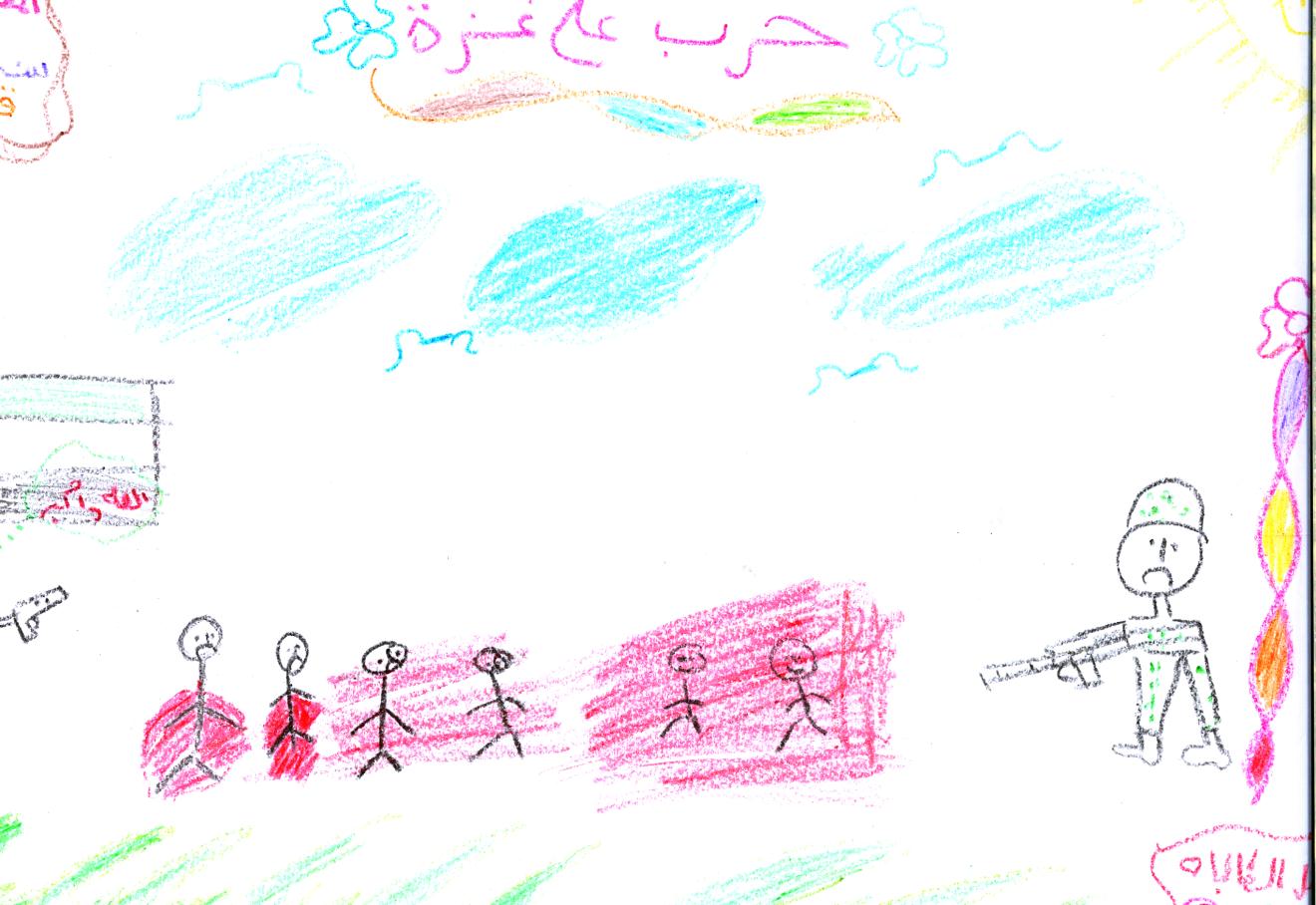Drawings in therapy: a communication tool when words cannot be pronounced

The use of drawings is widespread among mental health practitioners. Psychologists working for MdM are no exception: they often use this creative activity as a tool in their therapy with children.
The resort to drawings is a component of what is called art therapy: a form of psychotherapy that uses art media as its primary mode of communication.[1] In the context of a therapy, drawings become tools used by psychotherapists to install communication and a medium to address emotional issues. “Drawings are a projective tool. We can use it with children or adults. It helps individuals to project themselves, to express their experiences, their hopes and expectations, and their childhood traumas. It allows children to communicate and verbalize their fears when they cannot speak or don’t know how to put words on their feelings” explains Chantale Eid, MdM psychologist in Lebanon.
Used in individual or group counselling, drawings can reveal a lot on a person. Indeed the therapist takes into account a great variety of information: what is represented, what is omitted, symbols, the use of the space in the paper, the choice of the colors, the thickness of the lines and the behavior of the child while drawing. With what does the child start with? Is there hesitation? Was an element erased and why? The therapist observes the child but most important of all interacts with him/her. “I usually give a topic and then ask the children to tell me a story. For example, I can ask them to draw a family. In most cases they will draw their own family. Then I question them on the protagonists, what they do. I ask them to tell me a story, to explain to me their choices, the relations between each element, etc. it gives a lot of indications that will have sense in light of the background information, the history and the context I already have on the children”, highlights Chantale.
Most of the children who consult with MdM psychotherapists, whether in Lebanon, Jordan or Palestine, have suffered trauma linked to a war situation and still suffer from their current living conditions: some are refugees while others are living under the Israeli occupation. Too many of them have witnessed bombings, fighting, the death of a family member, and are exposed to violence and discrimination: their mental and physical well-being is impacted. As a consequence, many children develop behavioral and emotional problems, anxiety or stress related problems. A therapy often using drawings as a communication medium helps work on improving these symptoms and healing the child. “We work to secure children from their fears and improve their self-esteem. It is a long-term process that can only be successful if the family of the children cooperates and children trust the psychologist.” clarifies Chantale.
Trust is the key to a successful therapy: children need to feel secure to be able to express deep feelings. Whatever tool is used, whether drawings or games, it is only within a trustful environment that therapists will be able to work.
MdM puts into place mental health projects in Lebanon, Jordan and Palestine. Psychologists provide individual consultations and group support sessions while community health workers organize mental health awareness sessions in communities. Since the beginning of 2014, more than 8,000 consultations have been provided to women, men and children.
[1] http://baat.org/About-Art-Therapy